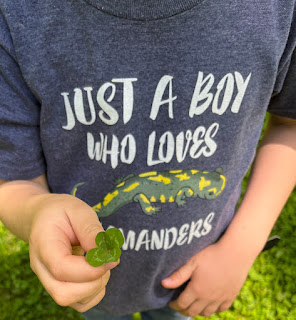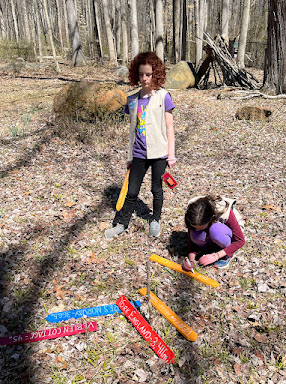This story contains elements of community, serendipity, astronomy, and history, and gives a sense of how we get things to happen at Herrontown Woods. For more than a year, a friend and Herrontown Woods volunteer, Jim Manganero, had been telling me about a telescope he was given by a friend. Jim is a retired engineer and was a close friend of John Nash, the great mathematician, and John's wife Alicia. Jim has come to some of our volunteer days at Herrontown Woods, and one particularly memorable day he showed me how to wield a hedge trimmer against the formidable invasive multiflora rose, whose thorns make it otherwise perilous to approach and subdue.
Jim would remind me periodically about his telescope, and each time we agreed it would be great to figure out how to work it and to invite people to look through it some night at the preserve. But not being particularly adept with technology, I wouldn't follow up--this despite my being the son of a distinguished astronomer, W. Albert Hiltner, and having spent considerable time around observatories as a kid.
Then one day this winter, two women were walking past Veblen House and we got to talking. Somehow astronomy came up, and one of the women, Gitanjali Bakshi, said she knows an astrophysicist at Princeton University who loves the outdoors and community involvement, and might well help us with the telescope.
His name is Gaspar Bakos, and when I sent him an email, he happened to be down in Chile, on a mountain top, building a special kind of telescope he had designed that will watch the whole night sky, with the aim of detecting anything out of the ordinary. As it happened, he is building his telescope high on a mountain within a few miles of the twin Magellan Telescopes that were my father's last design project.
Gaspar agreed to meet with us after returning to Princeton, and quickly got the telescope up and running. Jim ordered some additional parts, and we were ready to observe.
At last, the long awaited night arrived to try out the telescope. Gaspar oriented the telescope using two stars far apart in the sky. The telescope could then navigate on its own to any star he typed into the remote control.
The night skies in Princeton, as Gaspar will tell you, are highly polluted with waste light from buildings and streets, robbing us of a good view of the heavens. Nevertheless, we were able to see the Pleiades, and hear Gaspar's fascinating story of how cultures all around the world share the same mythology--which astronomy has helped determine to be the oldest mythology of them all--about Orion and the Seven Sisters.
Gaspar is an advocate for dark skies, which involves convincing people and communities to minimize the waste light that bleeds upward, washing away what once was a magnificent view of the universe. He describes what we are missing in a wonderful video, entitled The Lost Wonders of the Night Sky.
When we finally aimed the telescope at the moon, Gaspar captured the image on a piece of paper held up in front of the eyepiece. Now that we have the telescope functioning, the next step is to organize an evening of observation at Herrontown Woods. That's the goal, but as you can see, the journey is as pleasurable and meaningful as the destination.


















































